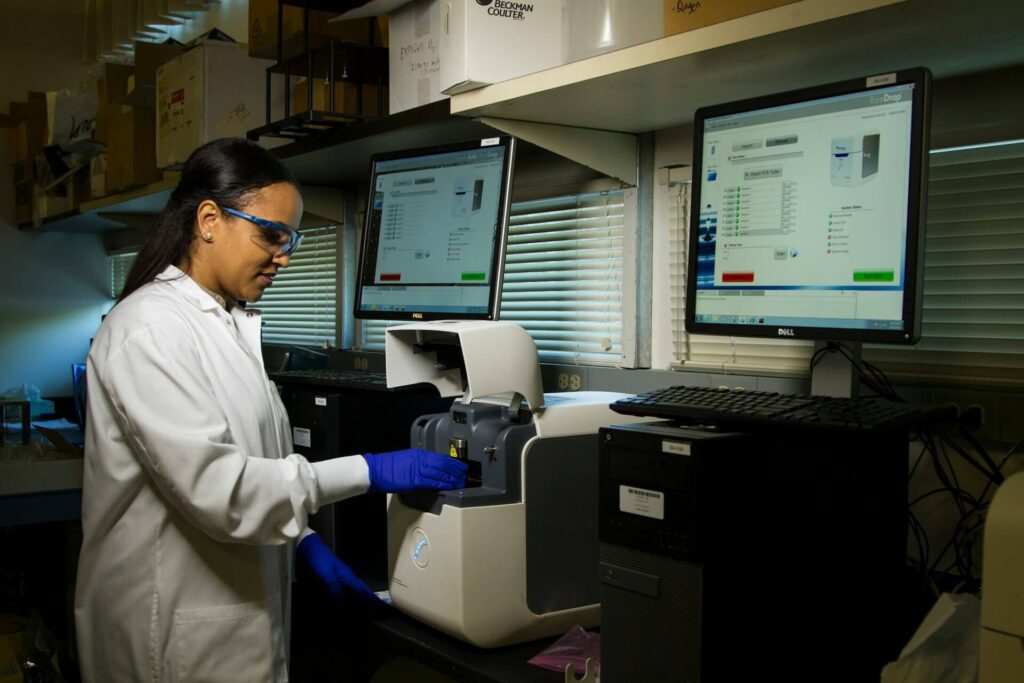In an age where technology permeates every aspect of our lives, from how we work to how we communicate, it is hardly surprising that the field of healthcare is on the cusp of a technological revolution.
Advances in technology are equipping the healthcare industry with powerful new tools to improve patient care, streamline operations, and, in many cases, save lives.
From the advent of telemedicine and wearable technologies to the promise of precision medicine and the potential of artificial organs, these innovations are reshaping the very core of the healthcare model.
The purpose of this post is to explore these developments and discuss the benefits and challenges they present.
We will also look at the role of data analytics, artificial intelligence (AI), and virtual reality in healthcare, touching on the potential ethical and social implications of these technologies.
In the ever-evolving landscape of healthcare, the integration of technology is revolutionizing the way medical services are delivered and managed. Innovations such as telemedicine, artificial intelligence, and blockchain are streamlining processes and improving patient outcomes.
Additionally, as food manufacturing becomes more interconnected globally, ensuring adherence to legal standards becomes paramount. Here, obtaining an international trade compliance certification is crucial for organizations looking to operate across borders while maintaining regulatory compliance.
This certification not only guarantees adherence to international laws and regulations but also enhances the credibility and operational efficiency of healthcare organizations on the global stage.
With an increasing emphasis on compliance, technology is playing a pivotal role in maintaining the integrity and safety of healthcare systems worldwide.
Telemedicine: The Doctor Will See You Online
Telemedicine, once a futuristic concept, has rapidly become an integral part of modern healthcare. This practice, which allows doctors to evaluate, diagnose, and treat patients remotely using telecommunications technology, has the potential to reach individuals in the most remote areas and provide immediate care during emergencies.
Benefits:
- Accessibility: Patients in rural or underserved areas can receive care without traveling long distances.
- Convenience: Telemedicine offers the convenience of quick consultations without the need for in-person visits.
Challenges:
- Regulatory Hurdles: Licensure and reimbursement issues can complicate the practice of telemedicine across state lines.
- Technological Barriers: Access to high-speed internet and the required devices are still not universal.
Wearable Technology: From Fitness Trackers to Lifesavers
Wearable technology has moved beyond simple fitness tracking to become an important asset in managing chronic conditions and monitoring patient health in real-time.
These devices, which include smartwatches, patches, and smart clothing, track vital signs, detect early signs of conditions, and even administer controlled doses of medication.
Benefits:
- Continuous Monitoring: Provides a constant stream of health data, enabling earlier intervention and more personalized care.
- Patient Empowerment: Encourages greater patient involvement in their own health and wellness.
Challenges:
- Data Privacy: Concerns about the security and privacy of sensitive health data.
- User Adoption: Not all patients are willing or able to incorporate wearable technology into their daily routines.
Precision Medicine: Treating the Individual, Not the Disease
One of the most promising fields in healthcare, precision medicine, takes into account individual variability in genes, environment, and lifestyles when developing tailored treatment plans.
Technologies such as genomics, proteomics, and metabolomics are providing new insights into diseases and the potential for more targeted therapies.
Benefits:
- More Effective Treatments: Customized therapies are often more effective and have fewer side effects.
- Improved Outcomes: By targeting the specific mechanisms of disease, precision medicine can lead to better patient outcomes.
Challenges:
- Cost: Personalized medicine can be expensive, and cost-effectiveness is still a concern.
- Complexity: The integration of large-scale biological data and its interpretation for treatment remains complex.
Artificial Intelligence and Machine Learning in Healthcare
The application of AI and machine learning in healthcare is transforming everything from diagnostics to personalized medicine.
These technologies can process vast amounts of data, identify patterns, and make previously impossible predictions, potentially leading to earlier detection and more effective treatments.
Benefits:
- Diagnostic Accuracy: AI can help interpret diagnostic tests with a high degree of accuracy.
- Efficiency: By automating routine tasks, AI can free up healthcare professionals to focus on patient care.
Challenges:
- Validation and Trust: There is a need to validate AI models, and gaining trust of healthcare providers remains crucial.
- Bias and Fairness: Ensuring that AI is unbiased and fair in its predictions and treatment recommendations is an ongoing challenge.
Virtual Reality (VR) and Augmented Reality (AR) in Medicine
Virtual and augmented reality are not just for entertainment; they are finding valuable applications in medical education, surgical training, and even patient therapy.
These immersive technologies offer new ways to visualize anatomy, simulate complex procedures, and improve patient outcomes.
Benefits:
- Education and Training: VR and AR provide realistic, interactive environments for medical professionals to practice and learn.
- Pain Management and Therapy: VR has shown promise in reducing pain during medical procedures and in psychological therapy.
Challenges:
- Standardization of Practices: Developing consistent and standard practices for using VR and AR in healthcare presents a challenge.
- Initial Costs: The high initial costs of implementing these technologies are a barrier for many healthcare facilities.
Artificial Organs and Bioprinting: Manufacturing the Future of Medicine
The ultimate aim of medicine is to repair and restore the human body, and advances in artificial organs and bioprinting are bringing that goal into sharper focus.
3D bioprinting can create tissues and organs customized to individual patients, and artificial organs are becoming increasingly sophisticated.
Benefits:
- Customization: Bioprinting enables the creation of organs tailored to a patient’s anatomy and immune profile.
- Alleviating Organ Shortages: Artificial and bioprinted organs could solve the problem of organ shortages for transplants.
Challenges:
- Complexity and Regulations: The science and technology involved are still in their early stages, and regulatory pathways need to be established.
- Ethical Considerations: The creation and use of bioprinted organs raise complex ethical questions.
The Role of Data Analytics in Healthcare
In the era of big data, the analysis of large and complex datasets has the potential to revolutionize medicine. Health analytics can identify trends, manage patient populations, and improve personal health.
Benefits:
- Predictive Analytics: Can predict trends and patterns and optimize patient outcomes and care.
- Population Health Management: Data analytics can improve the overall health of a population by identifying areas for intervention.
Challenges:
- Data Quality: Ensuring that data used for analysis is accurate and representative is a constant challenge.
- Interoperability: Making sure that different healthcare systems can share information and work together effectively is essential.
The Impact on Patients and Providers
The convergence of technology and medicine promises a future where healthcare is more personalized, more effective, and more accessible.
For patients, this could mean earlier detection of diseases, more targeted treatments, and the ability to manage their health more independently. For healthcare providers, it offers the opportunity to work more efficiently, reduce errors, and continually update their skills through lifelong learning.
Benefits for Patients:
- Empowered Health Choices: Patients can make more informed health choices based on the data provided.
- Improved Experiences: Patient experiences are likely to improve with more personalized and empathetic care.
Benefits for Providers:
- Enhanced Interactions: Providers can have more meaningful interactions with patients, as routine tasks are offloaded to technology.
- Professional Development: Technology allows providers to keep learning and growing, ultimately improving patient care.
Ethical and Social Considerations
As with any major shift, the integration of technology into healthcare raises important ethical and social questions that need to be addressed.
These include data privacy, equitable access to technology, and the potential for these advancements to exacerbate existing health disparities.
Data Privacy and Security:
- Balancing the need for data to advance medicine with the privacy rights of patients is an ongoing challenge.
- Ensuring that health data is secure and protected from breaches is crucial.
Equitable Access:
- Technological advancements must be accessible to all to avoid creating a “healthcare divide”.
- Strategies need to be developed to ensure that all patients can benefit from new technologies.
Disparities and Biases:
- There is a risk that AI and other technologies could perpetuate or exacerbate health disparities if not carefully monitored and regulated.
- Ensuring that technology is developed and used in ways that are fair to all patients is essential.
Looking to the Future
The future of medicine is full of promise, but it also presents a myriad of challenges that need to be addressed. Technology is not a panacea, and its integration into healthcare must be carefully managed to ensure that it creates more good than harm.
With thoughtful consideration, investment, and collaboration, the intersection of technology and healthcare presents a tantalizing vision of a future where the practice of medicine is more effective, efficient, and compassionate.
Healthcare professionals, policymakers, and technologists all play pivotal roles in shaping this future. By working together, we can harness the power of technology to transform healthcare and, ultimately, improve the lives of millions.








